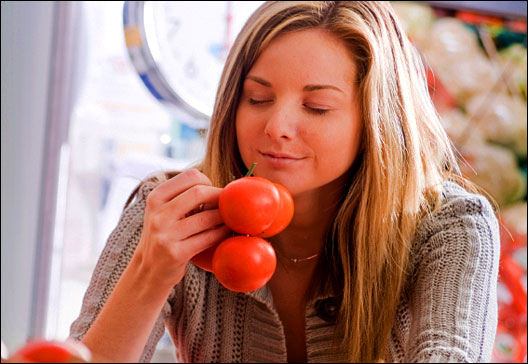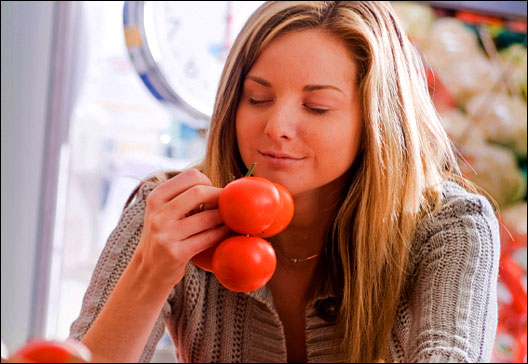
On June 25, I spoke at the Organic Summit in Boulder, Colo., to an audience consisting largely of people who work in the organic food industry. This column is an adapted version of my talk.
In his wildly popular satirical blog Stuff White People Like, the Canadian writer Christian Lander recently made some tart observations about the place of organic food in North American culture.
“White people need organic food to survive,” he declared. “Where they purchase this food is as important as what they purchase. In modern white person culture, Whole Foods has replaced churches and cathedrals as the most important and relevant buildings in the community.”
Later in this remarkable post, Lander returned to the religious theme: “Many white people consider shopping at Whole Foods to be a religious experience, allowing them to feel good about their consumption.”
I bring up this clearly over-the-top piece of writing because I think it actually raises an important question about the place of organics in our culture today. To what extent do organics merely “allow people to feel good about their consumption,” as Lander says, and to what extent do they inspire people to think about their consumption, to consider their place in the consumption-production process?
I would argue that today, amid all of our ecological crises — the climate crisis, the water crisis, the energy crisis, the crisis of the oceans, all of which implicate agriculture and food production — organics aren’t inspiring people to think very much at all. And the responsibility for that failure lies most heavily with the people in organics who have the power to communicate with the public: the corporate marketers.
We’re So Sorry, Uncle Albert
If we look at the history of organic agriculture from its origins in the work of botanist and agricultural maverick Sir Albert Howard in the 1930s and 1940s, we can make a case that organics have been a stunning success. For years, they’ve been the only real growth area in the entire food industry, which here in the United States is characterized by stagnant demand. While overall food consumption rises with population — something like 1 percent per year — demand for organics rises by a steady 15 to 20 percent per year.
However, from a different direction, the success of organics looks considerably more modest. Sir Albert published The Soil and Health in 1947 — just at the point when industrial-scale agriculture was taking off, supercharged by synthetic and mined fertilizers as well as a slew of poisons from the rising petrochemical industry. Sir Albert never saw organics as an “alternative” or “niche” form of farming. He saw the two visions of agriculture in direct competition — and foresaw all manner of grave consequences if industrial ag won out.
Sir Albert insisted on what he called the Law of Return, which can be summed up like this: Every time we harvest something from the soil — every time we consume food or drink — we’re taking away nutrients and organic matter that need to be replaced. The whole trick of agriculture, from the first wheat fields of the Fertile Crescent to a modern 10,000-acre Iowa corn farm to my own little patch of land in North Carolina, has always been how to replace those nutrients, how to maintain soil fertility.
Now, according to Sir Albert, when you deal with soil fertility by resorting to synthetic and mined fertilizers, you’re undermining soil’s long-term ability to produce crops. You’re leeching out key micronutrients without replacing them. You’re sterilizing the soil of microorganisms needed for truly healthy plants. Producers who farm this way, he said, are “bandits” stealing true soil fertility from future generations.
Something tells me Sir Albert would be pretty alarmed by what’s happening today, despite the steady growth of organic food. Globally, demand for synthetic and mined fertilizer is exploding. Amid a bleak economy and a dismal stock market, one of the few seemingly sure ways to make money is to invest in fertilizer companies. The globe’s two largest fertilizer companies — Potash Corp. of Saskatchewan and Mosaic, which is two-thirds owned by Cargill — are practically printing money. In the last year alone, Mosaic’s shares have quadrupled and Potash’s have tripled, while the overall stock market has lost 10 percent. Meanwhile, Monsanto, the globe’s dominant purveyor of genetically modified seeds, has seen its share price double.
Just this week, the Wall Street Journal declared that the “salad days of organic agriculture are wilting in favor of high-tech tomatoes.” Almost triumphantly, the Journal published a chart comparing Monsanto’s surging share price to that of Whole Foods, which has plunged by a third over the last year.
Even as organics gain popularity and make people feel good about what they consume, industrial agriculture is consolidating its grip over the U.S. heartland, where it’s burning through one of the greatest stores of soil fertility on the globe, and it’s expanding rapidly into the savanna and even the rainforest of Brazil, the globe’s emerging industrial-agriculture powerhouse.
I don’t mean to discount the work that’s been done by the organic movement. Today, we have about 1.7 million acres in organic crop production in the United States. That’s a remarkable achievement, representing decades of hard work. No one can deny the value of protecting that much land from a steady stream of chemicals that poison workers, the soil, and water alike. But total U.S. cropland stands at about 435 million acres. That means less than 1 percent* of U.S. cropland is managed organically. With conventional grain prices at all-time highs, that number may be stagnating, not growing. We have lots more work to do.
Appetite for Instruction
One of the things the organic industry has to do is educate, inform, and provoke. In this country, fewer than 1 percent of us farm. That’s the lowest rate in the world — and surely the lowest rate in the history of agricultural society. Food really does seem to arrive on our plates by magic — it appears, or seems to appear, by the grace of corporate marketers, not through the hard work of people interacting with the soil, animals, and the climate.
And I believe this ignorance — this beautiful, blissful state of unknowing that would be the envy of nearly any society that came before us — has mostly been maintained by the organic movement. Surely it’s maintained by “organic” milk processors that buy from feedlot dairy operations, and then decorate their cartons with happy cows munching grass. Surely it’s maintained by “certified organic” supermarket chains that decorate their produce sections with images of prosperous farmers, and then stock their shelves with produce grown under God knows what conditions in Chile. It’s maintained by large organic farms that quietly rely on exploited immigrant labor to eke out profits. And it’s even maintained at the farmers market, by the farmer who’s too embarrassed to tell his customers that he’s barely scraping by, that his back is killing him, and that he can’t afford health insurance.
If we’re going to move beyond 0.4 percent organic cropland and really challenge industrial agriculture, we also have to move beyond this acceptance of mass ignorance. One concrete thing we can do is start talking honestly and seriously about soil fertility — Albert Howard’s Law of Return. We all know our food system generates tremendous amounts of waste. Very little of it gets cycled back into soil. Instead, it ends up rotting in landfills.
I know from hard experience that for new organic farms, the No. 1 challenge is coming up with a fertility strategy. Creating the kind of closed-loop, mixed-farming system celebrated by Albert Howard and embodied by Joel Salatin in Virginia takes years. One of our dirty secrets is that a lot of organic farmers rely on manure from confined-animal feedlot operations to fertilize their land. By doing so, we’re depositing all manner of pharmaceuticals and toxins into our best farmland — the very stuff people try to avoid when they buy organic. An alternative farming system that relies on CAFO waste for fertility is a kind of parasite on a sick animal.
Why not champion a national composting policy, one that compels municipalities to transform food waste into high-quality, crop-grade compost? And why not then give it away to farmers — the ones who grow food for their nearby communities? That’s an agricultural subsidy that makes all kinds of sense.
While we’re at it, let’s reinvest in the infrastructure that makes small-scale, pasture-based meat and dairy production viable. The best and most successful organic farms are the ones that mix diversified crop production with livestock production; they build their soil with their own animals’ composted manure. But as the Tysons, Smithfields, and Cargills of the world gained control of the meat and dairy industries, they shut down processing plants and concentrated production geographically. Who wants to raise chickens if you have to haul them 70 miles to a USDA-approved slaughterhouse, and 70 miles back?
Rather than continue a trend of corporate control and consolidation of organics, the decision makers in this industry should be cajoling the federal government to enforce antitrust laws and break up the monopolies that control the food system. You should conceive of yourselves as the anti-Tysons and anti-Smithfields by investing in appropriate-scale processing plants all across the land.
As our globe lurches into a period of ecological and economic crises — not least, the food crisis — what we need is less ignorance about food and more people with their hands in the dirt producing it. If we can’t achieve that, than the Tysons, Cargills, and Monsantos will retain their grip over food production, and organics really will amount to some “stuff white people like” — a soothing room within a sinking ship.
*[Correction, 27 Jun 2008: This article originally stated that less than 4 percent of U.S. cropland is managed organically, but it is less than 0.4 percent. The author regrets the miscalculation.]
Related links:
Why that organic label on your milk doesn’t tell the whole story
Reviving Sir Albert Howard’s much-cited, little-read sustainable-ag masterpiece
Sustainable-ag legend Joel Salatin can farm — but can he write?




